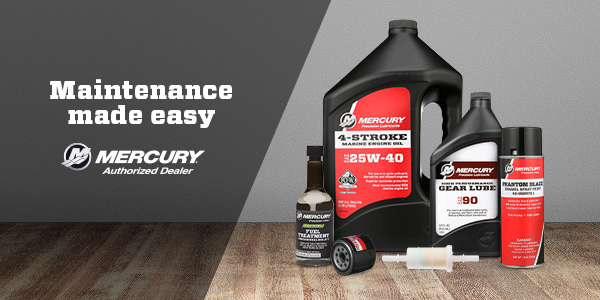Winterizing
Winterizing Your Boats Engine & Sterndrive
Steps for winterizing your engine and sterndrive from a former Chicago marina owner!
- If gasoline without ethanol is available fill the fuel tank(s) and add a sufficient amount of Fuel System Treatment and Stabilizer to treat the gasoline. Follow the instructions on the container. (See our list of recommended genuine Mercury Marine products)
- If fuel without ethanol is unavailable then the fuel tanks should be drained as low as possible and Quicksilver Quickstor Fuel Stabilizer for Marine Engines should be added to any fuel remaining in the tank.
WARNING ---- Fuel vapors can be present in the engine compartment. Avoid injury or damage caused by fuel vapors or explosion. Always check for leaking fuel or the smell of gasoline and ventilate the engine compartment prior to starting the engine or performing any work! Keep a fully charged fire extinguisher close at hand
Before starting any of the procedures shown here make sure you have the proper knowledge and experience to do the job!
- Winterize the fuel system – see below – to avoid burning up your sea water pump you will also need to supply water to your sterndrive or water intake during these steps.
- Change the oil and oil filter so the accumulated moisture and acids don’t spend the winter eating away at the inside or your engine.
- Flush the cooling system by running your engine with fresh water using the flush out fitting (if you have one) or ear muffs on your stern drive. Run the engine at idle speed and allow it to get up to operating temperature.
- Disconnect the battery. You might want to remove it from your boat for the winter. Store your battery in a cool dry place. We found that connecting a small trickle charger to the battery overnight once a month during storage does the best job of prolonging its life.
- Winterize the colling system.
That's it for the engine!
If you have a sterndrive, see below.
A few pointers – always store with the drive down. This puts the least strain on the bellows & hoses. This also allows the water intake and exhaust passages to drain.
Fall is the best time to change the gear lubricant so any accumulated moisture does not have a chance to corrode the bearings and gears over the winter. Or even worse – freeze and crack the lower unit. It is also a good time to actually pull the drive and inspect the bellows, water hose, u-joints, engine coupler, engine alignment and gimbal bearing. Older drives will have grease fittings on the u-joints and this is the only way to reach them. There is also a grease fitting for the gimbal bearing on older units.
At the very least pull the drain plug out of the lower and let a little lube out to make there is no water!
This is a great time to inspect hoses, belts, engine mounts and anything else you can put your eyes on so you have plenty of time between now and spring to make needed repairs.
See our list of winterization products for everything you may need.
Have a great winter and we'll see you in the spring!

